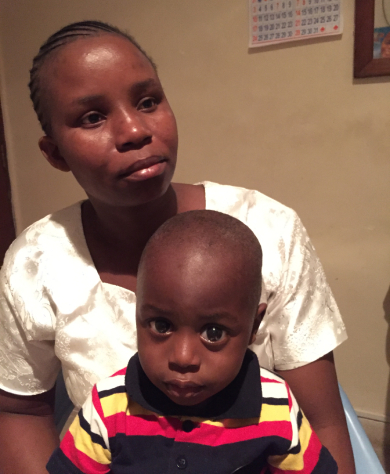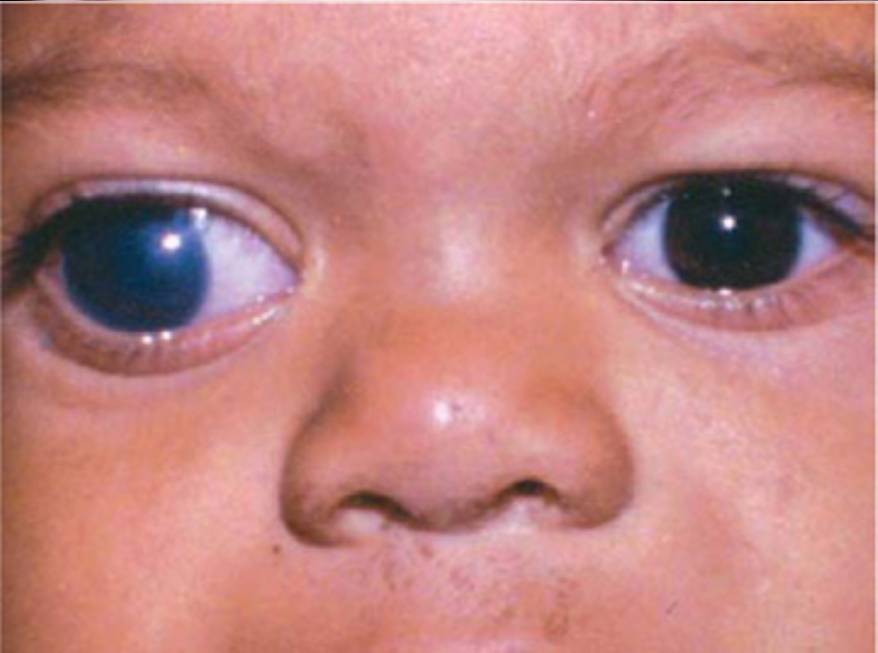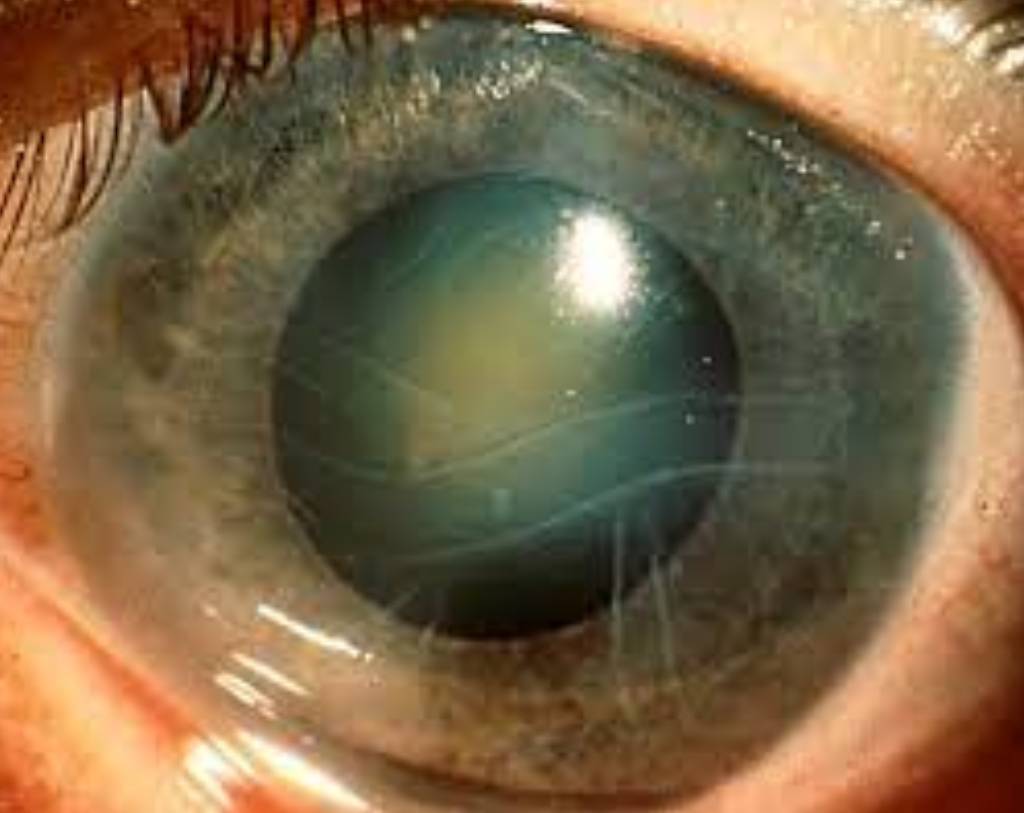Childhood (Congenital) Glaucoma
Childhood glaucomas encompass both primary congenital glaucoma (also called pediatric or infantile glaucoma) as well as juvenile glaucoma which may be diagnosed after age 3 and into early adulthood.
The congenital glaucomas are rare, but potentially blinding eye disorders. Although they occur only in about 1 out of 10,000 infants, their importance is magnified by the young age of the patients. Approximately 60% of congenital glaucoma is diagnosed before 6 months old and 80% before age 1.
In congenital glaucoma, the intraocular pressure is elevated as a result of an abnormal drain (trabecular meshwork) in the eye. About one-half of babies with congenital glaucoma have what is called primary congenital glaucoma. In this instance, the glaucoma occurs without any other abnormalities in the eye or elsewhere in the body. In the other one-half of babies, there are other abnormalities of the eye or in the rest of the body which are present. These may range from mild to severe. Although congenital glaucoma may be inherited, in most cases it is not. Most babies with congenital glaucoma are born to healthy parents without a history of glaucoma.


Diagnosing Congenital Glaucoma
Before the age of three, the wall of the eye is very soft and elastic. Therefore, when the eye pressure rises in congenital glaucoma, the eye enlarges (“buphthalmos”; see Figure 1). This is often recognized by the parents or pediatrician. After the age of three to four years, the eye is less elastic and does not increase in size when the eye pressure rises.
As the eye enlarges, an inner layer of the cornea, which keeps the cornea transparent, may be torn. Haab’s striae are horizontal curvilinear breaks in Descemet’s membrane (one of the inner corneal layers) resulting from acute stretching of the cornea in primary congenital glaucoma (Figure 2). These are in contrast to Descemet’s tears resulting from birth trauma, which are usually vertical or obliquely oriented. As a result, the elevated eye pressure pushes fluid into the cornea, causing it to swell and become hazy (Figure 1). This is often noticed by parents as a clouding, whitening, or grayish hue of the cornea. When the condition reaches this stage, the eye may be painful and tearing is present. The baby becomes sensitive to light and attempts to avoid it by covering the eye or burying the head in a blanket. The classic triad of signs/symptoms noted in a patient with primary congenital glaucoma include: epiphora (tearing), photophobia (light sensitivity), and blepharospasm (eyelid twitching).
Although both eyes are commonly affected, the glaucoma is often more severe in one eye than in the other. One eye may enlarge more than the other. In some babies, the glaucoma is present only in one eye, particularly when there are other abnormalities. Parents often state that the eye or eyes appear to be becoming more prominent or that one eye is larger than the other.
There are a number of other conditions which can be confused with congenital glaucoma. The most common of these is tearing due to obstruction of the tear duct, which is outside of the eye. This is not generally a serious condition, and may resolve without treatment. However, corneal clouding and enlargement of the eye indicate a serious situation and the baby should always be examined as soon as possible by an ophthalmologist.

Treatment for Congenital Glaucoma
Unlike adult forms of glaucoma which are usually treated with topical medications first, childhood glaucomas are often treated with eye surgery. Eye surgery is usually necessary, since treatment with eye drops is only temporarily helpful in many congenital glaucoma. Fortunately, surgical treatment, particularly in glaucoma which develops after the age of six months, is often successful in lowering eye pressure permanently. During the operation, the poorly functioning drain is opened. This exposes the deepest portions of the drain to the aqueous humor (fluid within the eye). Classically, two operations, goniotomy and trabeculotomy, have been used to treat congenital glaucoma. They may have to be performed more than once before the eye pressure is reduced. More recently, the GATT Procedure has also been used successfully in some forms of childhood glaucoma. If these are unsuccessful, then other types of surgery may be required.
Most babies with congenital glaucoma maintain some degree of vision, and some may even have excellent vision. With expanding knowledge, the next decade may lead to the discovery of the basic causes of congenital glaucoma and a new form of treatment.

 DONATE NOW
DONATE NOW